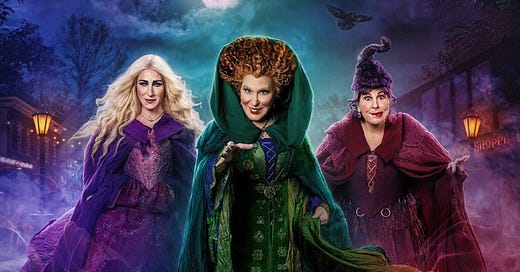Hocus Pocus 2, Directed by Anne Fletcher
"How Hocus Pocus 2 Fails to Capture the Magic of Its Predecessor"
Starring Bette Midler, Sarah Jessica Parker, and Kathy Najimy
Produced by Lynn Harris
Distributed by the Walt Disney Company
Rated PG for action, macabre/suggestive humor, and some language
Hocus Pocus (1993) was a delightful Halloween film that poked fun at superstitions and old legends while delivering a gripping story in which the protagonists risk their…
Keep reading with a 7-day free trial
Subscribe to The Objective Standard to keep reading this post and get 7 days of free access to the full post archives.





